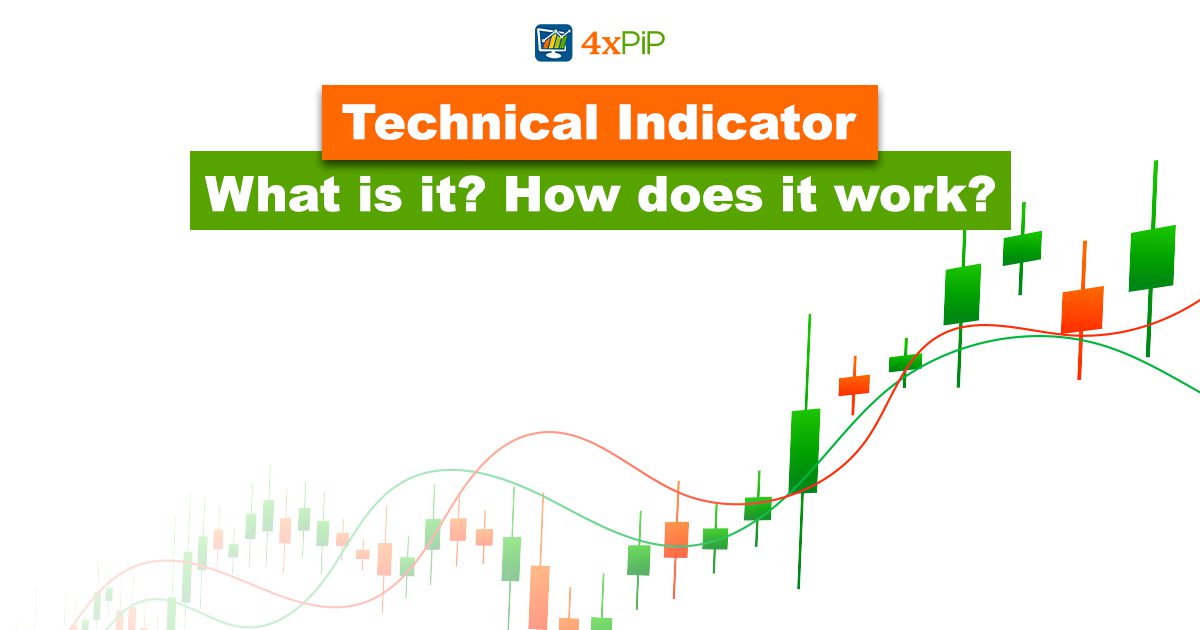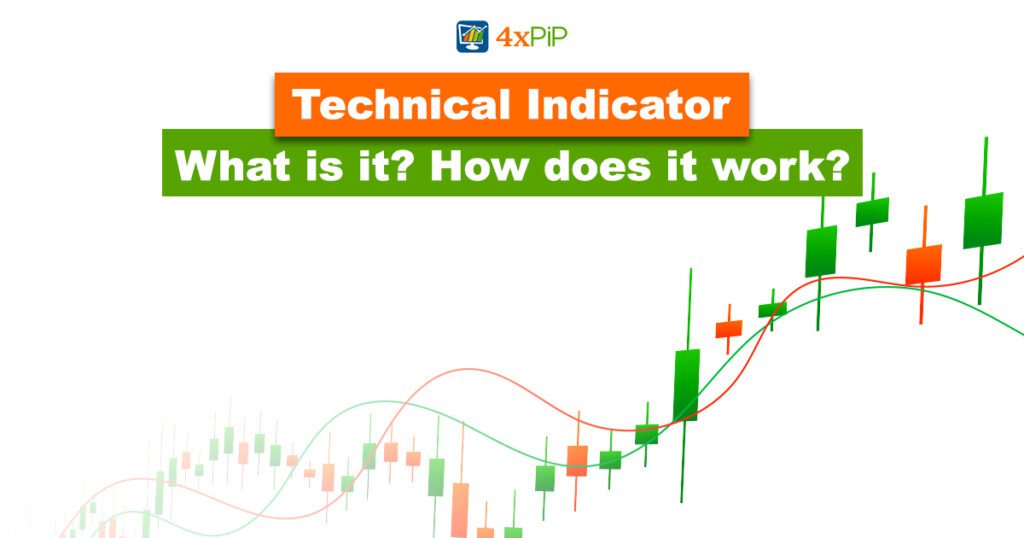In this article, 4xPip provides in-depth information about the technical indicator and its types. 4xPip also provides automation for the auto trading of your strategies through indicators. You can also visit 4xPip’s website to get more information and you can also purchase indicators to improve your forex trading. The platform it uses is Metatrader and the version it uses is MT4 and MT5.
Technical Indicator: What Is a Technical Indicator?
A technical indicator is a mathematical calculation based on the price, volume, or open interest of a security or contract, and investors who follow technical analysis commonly use it. Consequently, technical analysts or chartists diligently examine historical asset price data to identify relevant technical indicators. These indicators assist them in making informed decisions about entry and exit points for their trades.
Investors use technical indicators as valuable tools to identify trends, momentum shifts, and support and resistance levels. Additionally, they can employ them to pinpoint overbought and oversold conditions.
Some of the most popular include:
- Moving averages
Moving averages are a simple way to smooth out price data and identify trends.
- Relative strength index (RSI)
The RSI measures the speed and magnitude of price changes. Traders can use it to identify overbought and oversold conditions.
- Stochastic Oscillator
The stochastic oscillator measures the closing price of a security relative to its price range over a certain period. Traders can use it to identify overbought and oversold conditions.
- Bollinger bands
Bollinger bands are a volatility indicator that use moving averages to create bands around the price of a security. Traders can use them to identify overbought and oversold conditions.
- Moving Average Convergence Divergence (MACD)
The MACD is a momentum indicator that uses moving averages to identify trend reversals.
While technical indicators can be a valuable resource for traders, it’s essential to remember that they are not always accurate, and relying solely on them for making trading decisions is not advisable. Nevertheless, they can serve as a useful tool for identifying potential trading opportunities.
key takeaways about technical indicators:
- Mathematical calculations of historical price data form the basis of technical indicators.
- Traders can use them to identify trends, momentum, support and resistance levels, and overbought and oversold conditions.
- It’s important to note that these indicators are not always accurate, and traders should avoid using them as the sole basis for making trading decisions.
- Traders can use technical indicators in conjunction with other factors, such as fundamental analysis, to make more informed trading decisions.
If you are interested in learning more about technical indicators, you can access numerous online and library resources. Furthermore, many brokerage firms and investment training companies offer technical analysis courses that you can explore.
Technical Indicators: How Technical Indicators Work?
Traders practicing technical analysis use historical price data to identify trends, patterns, and other market signals. Technical analysts believe that they can use past price movements to predict future price movements.
Technical indicators are not always accurate, and traders should not rely on them as the sole basis for making trading decisions. Nonetheless, they can serve as a useful tool for identifying potential trading opportunities.
Here is how some of the most common technical indicators work:
- Moving averages
Moving averages offer a simple method for smoothing out price data and identifying trends. To calculate a moving average, you average the closing prices of a security over a specific period, such as a 50-day moving average, which involves averaging the closing prices of a security over the past 50 days.
- Relative strength index (RSI)
The RSI measures the speed and magnitude of price changes, functioning as a momentum indicator to identify overbought and oversold conditions. Traders interpret an RSI reading above 70 as indicating that a security is overbought, while an RSI reading below 30 suggests that a security is oversold.
- Stochastic Oscillator
The stochastic oscillator measures the closing price of a security relative to its price range over a certain period, and traders use it as a momentum indicator to identify overbought and oversold conditions. Traders interpret a stochastic oscillator reading above 80 as a sign that a security is overbought, whereas a reading below 20 indicates that a security is oversold.
- Bollinger bands
Bollinger bands are a volatility indicator that uses moving averages to create bands around the price of a security. The bands widen when volatility is high and narrow when volatility is low. Bollinger bands can be used to identify overbought and oversold conditions.
- Moving average convergence divergence (MACD)
The MACD, a momentum indicator, utilizes moving averages to identify trend reversals. Traders calculate the MACD by subtracting the 20-day moving average from the 50-day moving average. A positive MACD reading signifies a bullish trend, while a negative MACD reading signifies a bearish trend.
Traders can use technical indicators in a variety of ways. Some traders utilize technical indicators to identify entry and exit points for trades. Others employ technical indicators to confirm their trading decisions. Still, others utilize technical indicators to develop trading strategies.
Traders consider technical indicators a powerful tool for analyzing historical price data and identifying potential trading opportunities. However, it is important to remember that technical indicators are not always accurate, and traders should avoid using them as the sole basis for making trading decisions.
Types of Technical Indicators:
Technical indicators are valuable tools that investors use to analyze historical price data and identify potential trading opportunities. Within this context, there are two fundamental types of technical indicators:
- Overlays
In contrast, traders use overlays as technical indicators that they plot directly over the price chart. They operate on the same scale as the price chart, providing a convenient means of comparison with the price action. Consequently, overlays can effectively assist traders in identifying trends, support, and resistance levels, as well as overbought and oversold conditions.
- Oscillators
On the other hand, traders use oscillators as technical indicators that are specifically designed to measure the speed and magnitude of price changes. Traders position them beneath the price chart, and they typically have a range between 0 and 100. Consequently, oscillators serve the purpose of identifying overbought and oversold conditions, in addition to signaling potential trend reversals.
Examples of Technical Indicators:
The following chart shows the price of a security over time, along with three technical indicators:
The 50-day moving average is a line that connects the closing prices of the security over the past 50 days. It is plotted over the price chart to show where the current price stands relative to its historical averages.
The RSI, or relative strength index, is a momentum indicator that measures the speed and magnitude of price changes. It is plotted below the price chart and typically ranges between 0 and 100.
The MACD, or moving average convergence divergence, is a momentum indicator that uses moving averages to identify trend reversals. It is plotted below the price chart and consists of a signal line and a histogram.
In this example, the 50-day moving average is above the 200-day moving average, indicating that the overall trend has been positive. Furthermore, the RSI stands at 49.07, placing it in the neutral zone. However, the MACD is negative, implying that the trend may be undergoing a bearish shift.
Summary:
Technical indicators, which are mathematical calculations based on the price, volume, or open interest of a security or contract, are commonly utilized by traders who follow technical analysis. These indicators play a crucial role in identifying various aspects, such as trends, momentum, support and resistance levels, and overbought and oversold conditions. Among the most popular technical indicators are moving averages, the relative strength index (RSI), the stochastic oscillator, Bollinger bands, and the moving average convergence divergence (MACD). Nevertheless, it’s important to note that while technical indicators are valuable tools, they are not always accurate, and therefore, they should not be relied upon as the sole basis for making trading decisions. Nonetheless, they can serve as a valuable tool for identifying potential trading opportunities.
You can also visit the website to learn more about trading. If you want to get guidance for your trading, you can contact 4xPip’s experts at [email protected].












